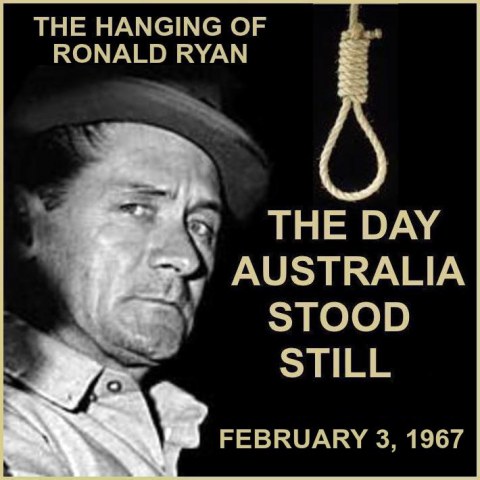Time for a reality check! For all of Tony Abbott and Julie Bishop’s lecturing of the Indonesian government over the planned execution of two Australian citizens, it is worth recalling that, as late as the 1960s, Liberal state governments in Victoria, South Australia and Western Australian were still carrying out ghastly executions by hanging.
The death penalty was not abolished in Australia because our rulers were more civilised or morally superior to their Indonesian equivalents. Determined mass protests backed up by strikes by workers put an end to the brutality.
Liberal premiers excelled in whipping up law and order hysteria to provoke a lynch mob atmosphere. The notorious Victorian Liberal premier Henry Bolte, during his 1962 campaign to hang Robert Tait, who had been convicted of murder, publicly advocated administering the lash (it was still on the books as a punishment at the time). Bolte was not some isolated figure in the Liberal establishment. He had the unanimous support of the cabinet and party room for hanging Tait.
Nonetheless, a wave of public opposition erupted to oppose the hanging. The Trade unions campaigned against it, and even the murdered woman’s son spoke out against the execution.
When Bolte and his Education minister went to open a secondary teachers’ college building next to Melbourne University, he was greeted by defiant students who let down the tyres of the two ministerial cars and padlocked the gates so that they could not get out.
Famously, a female studentmanaged to write “Hang Bolte” on the windscreen of his car in coral-pink lipstick.
Despite all this opposition, the Liberal government refused to defer the execution – even though various legal appeals were still in train. In an extraordinary step, the High Court intervened to order the government to issue a stay of execution until the appeals had been heard. Tait was eventually declared legally insane. Bolte was incensed that he had been thwarted in his quest for blood. He was determined to get his revenge and to ensure a hanging was carried out on his watch in Victoria.
In 1967, his victim was to be Ronald Ryan. He had been found guilty of killing a warder during a prison escape, even though there was a total lack of scientific forensic evidence to prove Ryan guilty. There were also inconsistencies in all fourteen eyewitnesses for the prosecution, mysterious missing of vital evidence that may have cleared Ryan, and the fact that one single shot was heard by all persons, which a prison guard admitted to have fired. Ballistic expert evidence and autopsy report indicated the one single fatal shot was fired from a distance, at an elevated position, in a downward trajectiory angle ... impossible for Ryan to have fired at such angles. But Bolte was determined Ryan would swing.
The campaign against the Tait hanging had had a significant impact on public opinion. A Gallup Poll in February 1966 showed that support for hanging had dropped dramatically, from 69 per cent 12 years previously to 42 per cent. The numerous anti-hanging petitions that were circulated received a broad response. The anti-hanging committees formed during the Tait case were quickly reactivated, and there was a new round of even more militant protests.
Students set up a permanent vigil on the steps of parliament in the lead-up to Ryan’s hanging. Then, on 27 January 1967, 1,000 demonstrators led by Melbourne’s militant waterside workers stormed parliament while chanting “We want Bolte!” and “Hang Bolte!”
Wharfies carrying a wooden frame on which their union banner was displayed forced their way through police lines and began beating on the doors. Vicious fights broke out between workers and police. The following Sunday, 8,000 protesters marched to Pentridge prison carrying placards reading “Hang Bolte” and “Bolte Murderer”.
What particularly provoked workers’ anger was that Ryan came from the bottom of the pile – a very poor Irish Catholic working class family – and thus was the perfect target for the Liberals’ reactionary agenda.
Initially, there were a few waverers in the Liberal cabinet. But they soon fell into line behind Bolte; the final cabinet decision to reaffirm the hanging was unanimous. One Liberal backbencher, Brian Dixon, publicly opposed the hanging. He was ostracised by other party members, and there were moves to expel him.
The night before Ryan was hanged, there was an all-night vigil outside Pentridge, at which Bolte’s effigy was hanged. Well before the execution at 8am on Tuesday, 3 February, the crowd had swelled to 3,000 booing, chanting, angry protesters. There were repeated clashes with the 300 police guarding the prison and more than 90 arrests.
A nationwide three-minute silence was observed at the exact time Ryan was hanged. Ryan’s fellow prisoners staged their own protest – they refused to get out of bed, staged a sit-in, refused to work or obey orders. There was an eerie silence throughout the prison.
Bolte had the grisly execution he had so desired, but it was to be the last in Australia. The protesters and striking workers had not saved Ryan, but they had demonstrated to the ruling class that any future state executions would face concerted resistance and could potentially rupture the whole fabric of society.
People Power !!!
...
Read more ... http://redflag.org.au/article/fight-against-death-penalty
Read more ... http://www.ronaldryan.info

